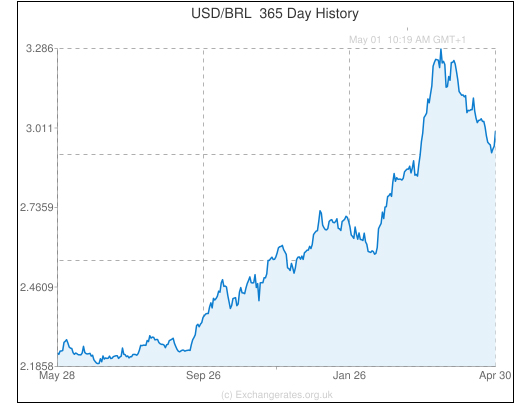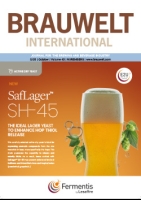Deal chatter does not go away for AB-InBev
Hear, hear: At the recent high-level Beverage Forum in Chicago (21 to 22 April 2015), organised by the Beverage Marketing Corporation, Wall Street analysts would not rule out a deal for AB-InBev in the near future.
Carlos Laboy, an analyst with the bank HSBC, was actually quite adamant that the world’s number one brewer had to clinch a deal because of “headwinds” in its two major markets, the U.S. and Brazil.
As if to underline his point, HSBC downgraded shares of AB-InBev from an “overweight” rating to a “reduce” rating at the end of March 2015.
No doubt about AB-InBev’s best-in-class profitability, though. AB-InBev generates mid-30s profit margins (EBIT), well above the next profitable firm, SABMiller with high 20s margins. Driving AB-InBev’s profitability is its majority stake in AmBev, the Latin American brewer that generates a whopping near-50 percent EBIT margin in beer in Brazil.
In 2014, AB-InBev sold 459 million hl of beverages, giving it a greater scale than SABMiller with 307 million hl and Heineken with 199 million hl. Furthermore, AB-InBev’s scale is concentrated in a few big markets, which allows it to generate meaningful cost economies from its size.
The firm holds a dominant market share of around 70 percent in Brazil, the third-largest beer market in the world by volume, and controls around half of the U.S. market, the world’s second largest.
Observers say this concentration of scale in its key markets reduces manufacturing complexity, leverages the firm’s high-fixed-cost base, and lowers the average cost of production, which is apparent in AB-InBev’s best-in-class profitability. The firm generated almost USD 41 in EBITDA per hl in 2014, well above the USD 21 per hl generated by second-place Heineken.
But, according to Mr Laboy, AB-InBev faces two major problems:
1) North American volume (U.S. and Canada) continues to decline. In 2014, it fell by 1.3 percent, and the company estimates that its market share in the U.S. declined because of competition in the light beer segment and a continuing drop in sales of its Budweiser brand. Although AB-InBev has made acquisitions in the fast growing craft beer market, the addition of these small companies cannot make up for losses at Budweiser. That’s why Mr Laboy thinks AB-InBev’s volume sales in the U.S. will remain under pressure and will negatively impact the company’s key performance metrics for the foreseeable future.
2) Brazil, the brewer’s second-largest geographical segment, looks like it’s in trouble too. Whereas in the past it seemed as if nothing could stop AmBev’s sales and profits from going up, Mr Laboy does not see this trend as on-going. Reports say the Brazilian economy is flashing warning signs as declining exports and inflationary pressures merge with middle class discontent with a lacklustre economy and increasing distrust of government officials. If the Brazilian currency does not improve (an estimated 30 percent of AB-InBev’s 2014 normalized EBITDA came from the Brazilian real), Mr Laboy fears this to be a significant headwind for the company in 2015.
That AB-InBev is already busy putting a deal together, several analysts took for granted. Mr Laboy cited circumstantial evidence such as the appointment of
João Castro Neves to head its North America zone in September 2014. He replaced Luiz Fernando Edmond, a venerable company veteran, who was moved to the position of Chief Sales Officer of the company. What does Mr Edmond do all day long as Chief Sales Officer, Mr Laboy wondered aloud and gave the answer himself: he is probably crunching numbers, trying to work out which combination will work best for AB-InBev.
According to Mr Laboy, there is other evidence that points to AB-InBev’s need for a deal: Mr Brito’s cut in bonus. According to AB-InBev’s published statement, the CEO’s “variable compensation” in 2014 was EUR 1.0 million, down almost 70 percent from 2013, when his compensation was EUR 3.29 million. Why was Mr Brito’s bonus cut by the board if it was not related to AB-InBev’s overall performance, Mr Laboy questioned?
While some of the analysts at the Beverage Forum would not rule out a tie-up between AB-InBev and SABMiller, albeit in the longer term, Mr Laboy flogged his theory that AB-InBev and The Coca-Cola Company would make a far better match as both seem to share a similar problem: both are struggling to achieve organic revenue growth.
As was already pointed out in December 2014 on the website seekingalpha.com, “Coca-Cola has stumbled as it attempted to grow organic revenues in the years since the Financial Crisis. Revenues sat at USD 31 billion in 2008, and declined a bit to USD 30 billion in 2009. In 2010 and 2011, the company added bottlers to give the illusion of revenue gains, and this did increase revenues to USD 46 billion. The problem for shareholders is that this gain was not the result of increased soda and beverage sales, but rather the acquisition of North American bottling operations from Coca-Cola Enterprises that masked the company’s problems growing soda revenues. From 2012 through 2014, Coca-Cola’s revenues have not grown, and currently sit at USD 46 billion. In other words, its revenues have remained stagnant since 2011.”
In case it has been forgotten, Coke in 2009 revealed its ambitious growth targets (“2020 targets”), which entailed a doubling of its revenues by 2020. How Coke will reach this target, with only five years left, is anybody’s guess.
The most interesting aspect to the analysts’ panel discussion at the Beverage Forum was not the nonchalance which accompanied their deal speculations – it was the audience’s reaction. Present were high-ranking managers from all beer and beverage companies in question. Did they walk out or did they visibly wince? Nope. Either they are all ultra-cool operators, or – and I prefer this interpretation – they have already heard enough water cooler rumours to have resigned themselves to such an inevitability.



